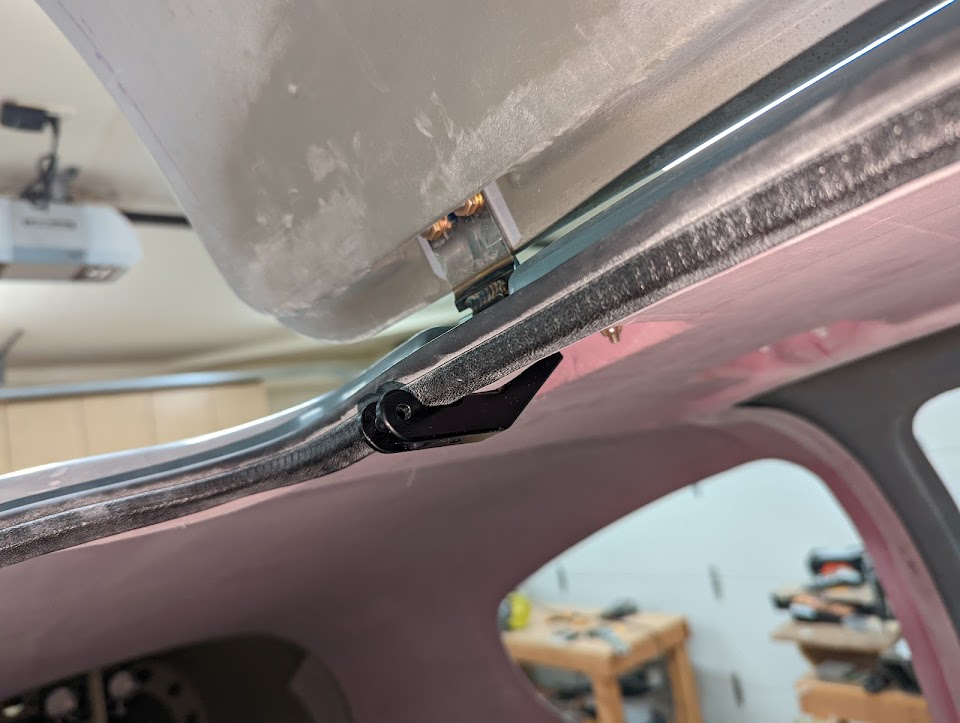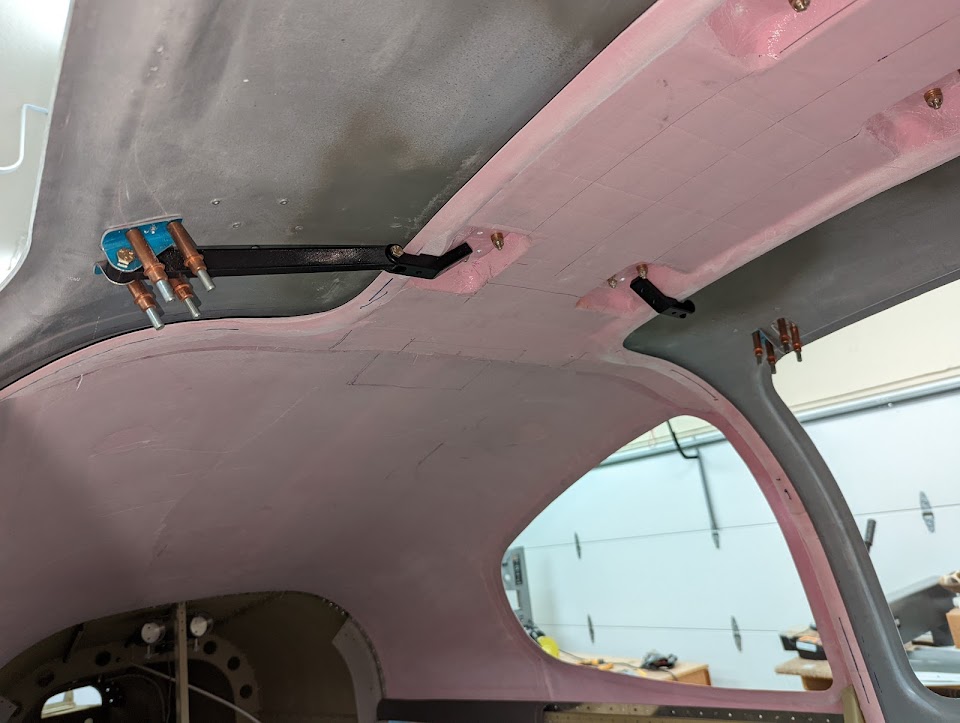I got my interior lights from Aveo, and verified that their Dome does fit well in the seat back brace closeout:
 |
| Aveo Dome light attached to a hole of the seat back brace closeout |
I also got my interior panels from Aerosport, and started the process of fitting and attaching them. They get attached by surprisingly few screws (some of them going through the longeron), but once that's done they actually feel pretty firm.
 |
| Left rear and baggage panels in place |
While it's true that there's not a lot of trimming to be done on these parts in terms of dimensions, the little trimming that's required needs to be done very slowly since there's no way to add back material if one removes too much, plus it takes some fiddling to adjust their alignment among themselves and with the airplane structure - for one, because plastic is flexible so they align a bit differently depending on how you hold them. After a lot of small adjustments, I got a pretty good fit:
 |
| Overlapping joint between the right rear and right baggage interior panels |
 |
| Right interior panels attached in place after trimming |
I still need to attach some of the nutplates for these panels (which will be easier to do once the cabin cover is off again), and haven't started work on the front panels yet, but the rear and baggage panels are done.
Time lapse:
Total access cover and floor panel rivets: 526
Total access cover and floor panel time: 39.4h















































